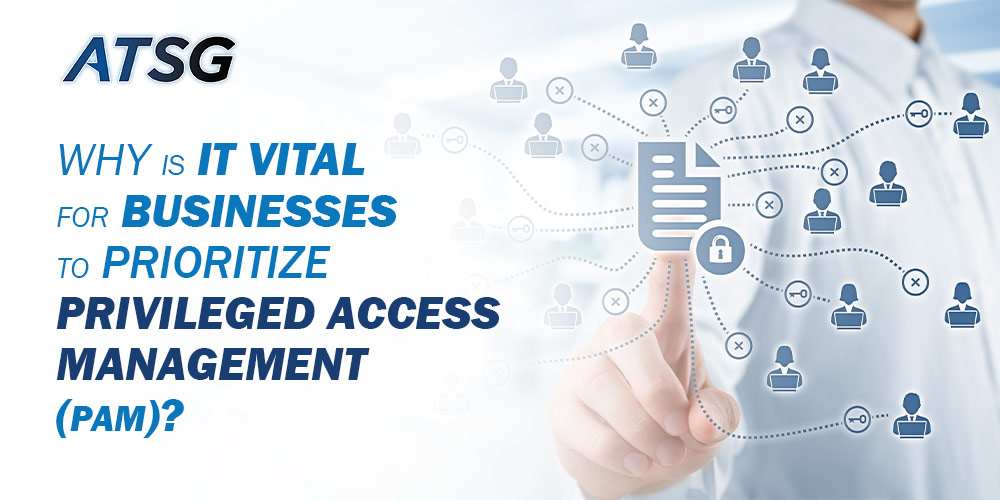In the 21st century, we live in today, the internet plays a huge role in turning the world into a global village. It enables a high level of interconnectivity and globalization that was once unimaginable. An unfortunate downside to this is that it has also made the area of cybersecurity more significant and challenging than ever. In fact, businesses today have no shortage of concerns to keep them “up at night” when it comes to securing their IT infrastructures from internal vulnerabilities and external threats.

From ransomware attacks to data thefts, the risks are many and varied. One area that is often overlooked, however, is privileged access management (PAM). This is why in this post, we discuss the significance of Privileged Access Management (PAM), and how it could end up costing your business dearly if left unaddressed.
What is Privileged Access Management (PAM)?
Remember that unchecked privileged access could end up putting an enterprise at high-security risk. This is where privileged access management (PAM) comes in. At its core, PAM is about controlling access to the most critical systems, applications, and data within an enterprise.
This type of access is typically granted to users that require elevated privileges to perform certain tasks or make fundamental changes to systems. However, if PAM is handled poorly, bad actors could leverage these privileges to carry out malicious activities, such as stealing data or sabotaging entire systems.
Similarly, Privileged Account Management is yet another indispensable component of any organization’s cybersecurity strategy. It is developed to help businesses with regulatory compliance and to diminish the risks associated with privileged access.
The key distinction between Privileged Account Management and Privileged Access Management lies in their scope and focus. While the former encompasses a wider range of tools and practices for managing privileged account access, the latter specifically targets the management of high-access accounts, such as super-admins, administrators, or root accounts.
Why is Privileged Access Management Security a Priority?
According to Gartner, privileged access management is a “must-have” cyber defense capability for businesses. This is because, with privileged access, the IT infrastructure of the targeted enterprise is exposed to the highest levels of risk from malicious attacks.
The two most common risks associated with ignoring privileged access management (PAM) are mentioned below:-
- One of the biggest risks is the potential for human error. Even well-intentioned users with elevated privileges can make mistakes that can result in security breaches or system failures.
- Another risk is that cyber miscreants could leverage unauthorized privilege elevation techniques to gain even higher-level permissions on already breached systems, platforms, or IT environments.
To avoid these risks, businesses should prioritize PAM within their operations.
Best Practices to Prioritize PAM in Your Enterprise
Traditional PAM controls, like credential vaulting or session management, are important yet insufficient, especially if they are deployed partially. Therefore, businesses must adopt the following mentioned best practices to prioritize PAM:-
- Today, it has become imperative for enterprises to emphasize just-in-time (JIT) privileged access approaches. Enterprises must also look for ways to implement privilege task automation and advanced analytics.
- When it comes to PAM controls for Cloud platforms, microservices, and robotic process automation (RPA) scenarios, enterprises need to acquire additional capabilities such as secrets management and Cloud Infrastructure Entitlement Management (CIEM).
- Another “tried and tested” way for businesses to prioritize PAM is by creating a PAM control coverage matrix. This matrix should be in complete alignment with the overall enterprise cybersecurity framework. Through this, businesses can develop a risk-based approach to planning and implementation.
- Organizations can also establish essential PAM functionalities by utilizing solutions that cater to their specific use cases, and encourage a zero-trust privilege This involves incorporating strong governance, protection, discovery, monitoring, and auditing mechanisms across operations.
- Enterprises can also expand their PAM capabilities by integrating their deployed solutions with other security management tools, or by extending the functionality of existing ones. This may include implementing remote support, automating tasks in DevOps (“development” and “operations”), managing changes, taking care of vulnerabilities, enabling secret-less brokering, looking after Cloud infrastructure entitlements, and secrets management.
- Finally, businesses can connect PAM solutions with security information and event management (SIEM) as well as IT service management (ITSM) tools, for better security and IT service management.
Conclusion
Today, digital transformation initiatives surely offer a “path to success”, but they also come with new cyber risks. Similar to a ship that must navigate “stormy waters” to reach its destination, businesses must also navigate through a “sea of cyber threats” to achieve success in the digital world.
With Cloud technologies and on-demand applications becoming the norm, privileged access management (PAM) has now become absolutely vital. Businesses have a choice; either struggle to navigate through the stormy seas on their own, or opt for an all-in-one PAM solution to help steer them safely to their destination. The choice is clear; prioritize PAM and “sail” towards success.
Contact ATSG for highly advanced managed IT services and intelligent technology solutions for your enterprise. ATSG’s proactive approach to managing cybersecurity risks includes the formulation of a comprehensive Cybersecurity Strategy for your enterprise. This will help your enterprise align its cybersecurity initiatives with overall strategic objectives, regulatory compliance, and risk management practices.
Not just that, our Application Layer Security capabilities are designed to safeguard your data and systems with secure coding practices and ongoing monitoring. ATSG also specializes in implementing Zero Trust Architecture (ZTA), to ensure the highest levels of security, strictly limiting access to only what is necessary.
Furthermore, our un-rivaled Micro-segmentation capabilities deliver granular level access controls, making it “the cherry on top” for your enterprise cybersecurity posture. So, trust ATSG to protect your business, and stay ahead of the evolving threat landscape with our cutting-edge Cybersecurity capabilities as well as solutions.




